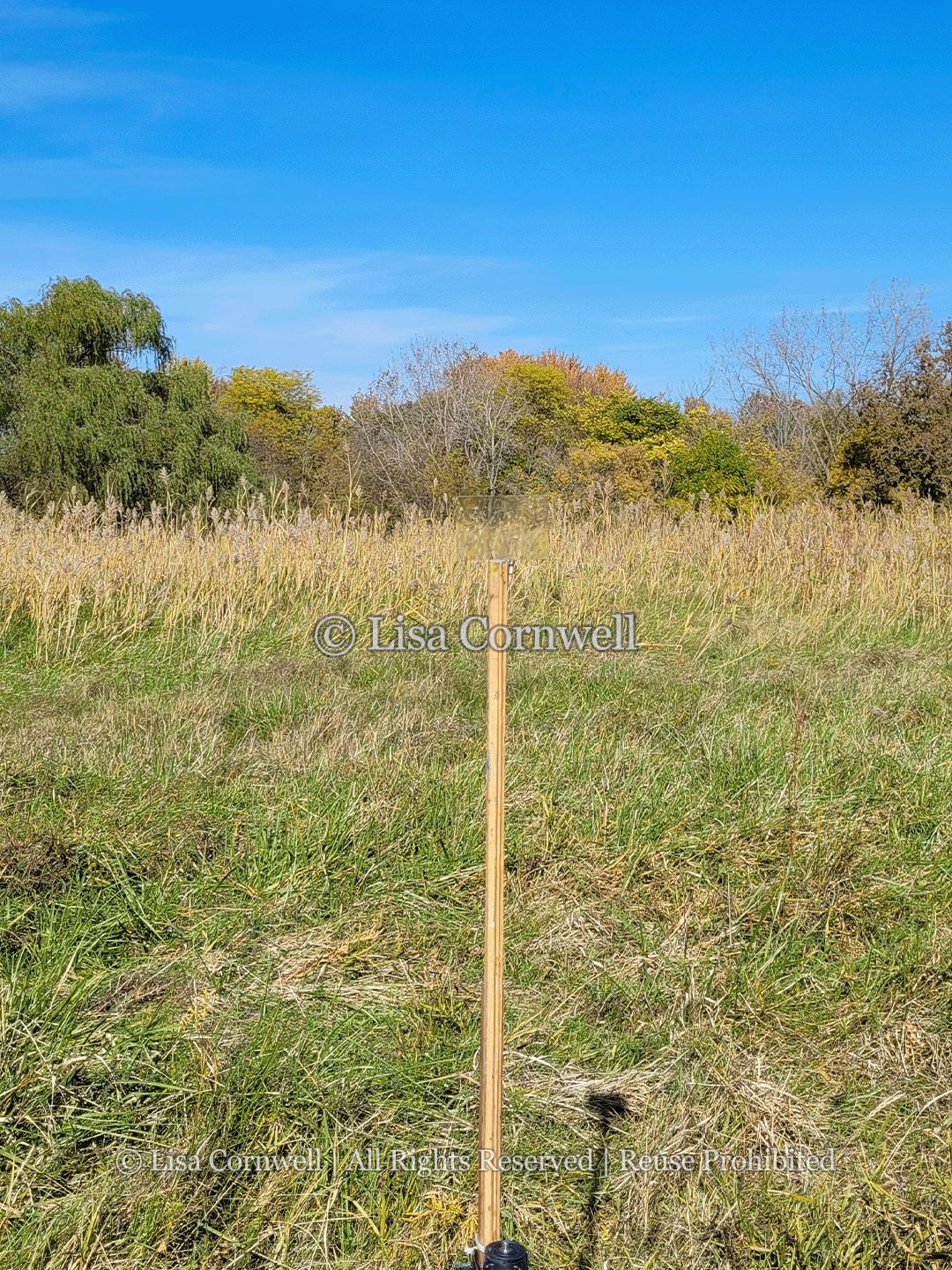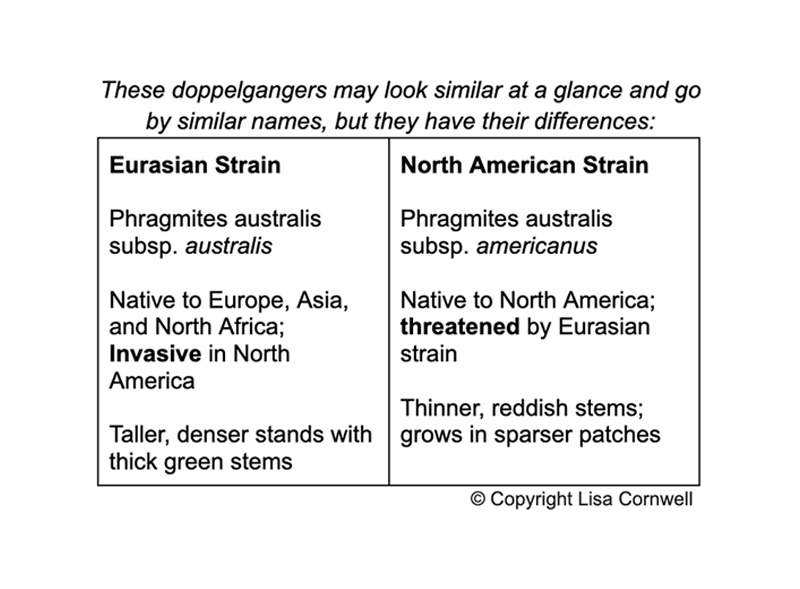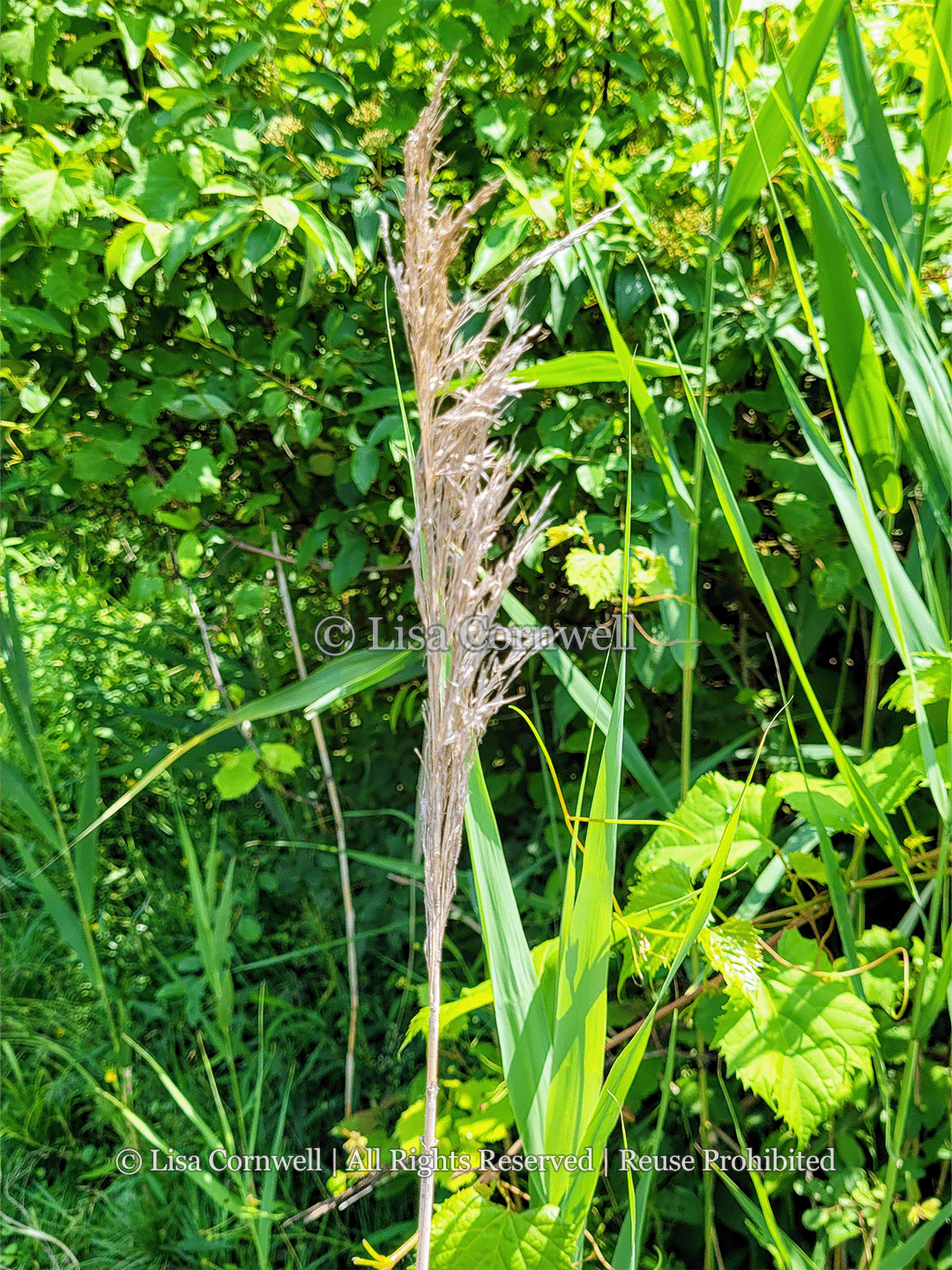The Story Behind the Subject: Invasive Common Reed Grass
My common reed grass painting is more than one illusion: the subject itself looks like a native plant, an aesthetic fixture of the landscape, but is actually an invasive species. It tends to trick the eye, as it can blend in with native grasses, but it can do significant damage to North American ecosystems. As with many invasive species, it’s not an inherently bad plant - it’s just in the wrong place, in an environment that’s not prepared to handle it.
Invasive Phragmites australis, or invasive common reed grass, is native to Europe, Asia, and North Africa. In its homelands, it’s beneficial, serving as erosion control, water filtration, and cover for birds. It’s not invasive in those places because their ecosystems evolved alongside it for tens of thousands of years to keep it in check with microbes, competing plants, and insects and animals that feed on it.
Its role in North America, however, is far from beneficial. It was likely unintentionally brought here in the 1700s, like many invasive species, as “hitchhikers” on maritime vessels. Since then, it’s been spreading like wildfire, outcompeting native grass species. This causes a host of issues related to biodiversity, such as:
Dense monocultures that displace native plants like cattails, wild rice, and the North American strain of Phragmites australis (the native common reed)
Harm to fish habitats from lowered oxygen levels in the water, leading to water stagnation and food shortages
Degrading habitat quality for native animals, leading to population declines that disrupt ecosystem balance
Invasive common reed grass is incredibly difficult to manage because it’s so widespread. At this point, it is typically only removed from high-value areas because the process is so difficult and time consuming. The fullgrown plant has a vast underground network of roots, as deep as several feet, which means it can’t simply be pulled out by hand. Sometimes, trying to remove it even spurs its growth. Full removal involves many steps, such as herbicide, selective cutting, and adjusting water levels.
A photo of the invasive strain of common reed grass, phragmites australis.
Federal and state agencies, local groups, and more, are working to try and reverse the damage caused by phragmites, and scientists have been researching since around the early 1900’s to learn about invasive phragmite’s impact on the environment.
However, the progress they’ve made will be lost if we don’t participate to prevent further damage of common reed grass to the environment. These are some ways we can help their efforts in everyday life:
Shoe Brush Stations: Use shoe-brush stations to remove seeds before and after entering nature areas
Spend around 1-3 minutes brushing shoes
Brush extra around areas where dirt and debris are stuck
Keep Gear and Pets Clean: When going or coming from nature areas, brush off clothes, gear, and pets, taking care to remove any lingering seeds
Stick to Trails: Staying on marked paths instead of traveling through thick plants will help you avoid unintentionally spreading invasive seeds
Note and Report: If you spot a new patch growing, pin the coordinates, snap a pic, and report it to the park staff or a local environmental agency
Support Native Species: By choosing native species for a home garden over annuals, you’re nurturing biodiversity that has been lost to invasive species like common reed grass
In my area, for example, I choose natives like salvia, bee balm, and catmint over annuals like petunias
This not only does wildlife a favor but enhances the gardening experience, as the plants are hardier and easier to care for and they attract a number of pollinators, including bees and hummingbirds
So why did I choose an invasive species as the subject for an illusion? For one, it turned out to be a great talking point and learning experience to get to know this species. For another, I’m driven by sustainability and biodiversity, so I always want to choose subjects that have a story to tell.
The story of invasive common reed grass is complex, and we’re only just starting to learn the realities of its presence here or how to curb its spread. Years ago, I painted an illusion of them at a different location and didn’t think twice. Now, I’ll never see them the same way as “fluffy feather dusters” after learning about their effect on the environment. Although they can be lovely, they’re a recent wild card threatening the story of North America’s ancient grasses, a story thousands of years in the making.
© Copyright Lisa Cornwell. This content may not be copied, reproduced, or distributed without permission.


